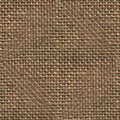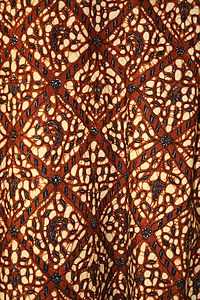Adire (textile art)
Adire (Yoruba — tie and dye) textile is the indigo dyed cloth made in south western Nigeria by Yoruba women, using a variety of resist dye techniques.[1][2] As the translation of the name suggests, the earliest pieces of this type were probably simple tied designs on cotton cloth handspun and woven locally (rather like those still produced in Mali), but in the early decades of the 20th century new access to large quantities of imported shirting material via the spread of European textile merchants in Abeokuta and other Yoruba towns caused a boom in these women's entrepreneurial and artistic efforts, making adire a major local craft in Abeokuta and Ibadan, attracting buyers from all over West Africa. The cloth's basic shape became that of two pieces of shirting material stitched together to create a women's wrapper cloth.[3] New techniques of resist dyeing developed, such as "adire eleko" (hand-painting designs onto cloth with a cassava starch paste prior to dyeing), along with a new style more suited to rapid mass production (using metal stencils cut from the sheets of tin that lined tea chests, using sewn raffia and/or tied sections, or folding the cloths repeatedly before tying or stitching them in place). Most of the designs were named, with popular ones including the jubilee pattern, (first produced for the silver jubilee of George V and Queen Mary in 1935), Olokun ("goddess of the sea"), and Ibadadun ("Ibadan is sweet").
However, by the end of the 1930s the spread of synthetic indigo and caustic soda and an influx of new less skilled entrants caused quality problems and a still-present collapse in demand. Though the more complex and beautiful starch resist designs continued to be produced until the early 1970s, but despite a revival prompted largely by the interest of US Peace Corps workers in the 1960s, never regained their earlier popularity. In the present day simplified stencilled designs and some better quality tie & die and stitch-resist designs are still produced, but local taste favours "kampala" (multi-coloured wax resist cloth, sometimes also known as adire by a few people).
References
- ↑ Norma Wolff. "Adire". Fashion History:Love to know. Retrieved December 25, 2014.
- ↑ "Adire – Indigo Resist Dyed Cloth From Yorubaland, Nigeria". Vam. United Kingdom. Retrieved December 25, 2014.
- ↑ Z.S. Saheed. "Adire Textile: A cultural heritage" (pdf). EA Journals.
External links
| ||||||||||||||||||||||||||||


.svg.png)
